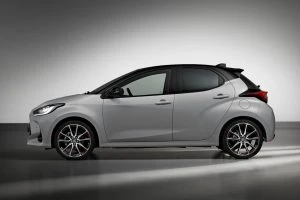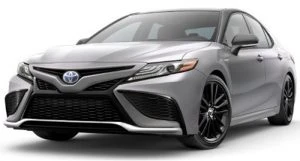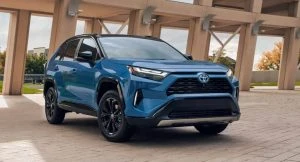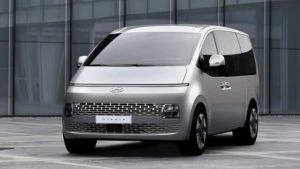Fuel Prices: New Car?
It’s unfortunate to see that the prices for fuel in Australia have been on the steady increase across. Retailers suggest that the increase in the cost of fuel has come about through record oil prices and new logistical challenges for acquiring the fuel. It’s definitely worth shopping around to ensure that you can get the best price on your fuel at the pump, as prices do differ from retail outlet around town and across States.
Just recently, regular unleaded petrol (91) had a national average of $2.14 per litre, yet the cheapest was found in Carnarvon, Western Australia, where it was sold for $1.59 per litre. The most expensive was located in Derby, Western Australia, where (91) was seen being sold for $2.42 per litre. The same trend is occuring for (95), (98), (E10), and Diesel.
As for how long these high fuel prices will continue to last, fuel industry analysts say that it’s anyone’s speculation at the moment. Peter Khoury, NRMA spokesman, recently said: “These prices are completely off the scale, more than twice what [motorists] were paying in April 2020… We have no idea where we would set the ceiling at this point.”
It begs the question: Should a motorist that has to do quite a few kilometres each week look at purchasing a more fuel efficient car? The answer, I guess, is up to you. It depends on how tight your budget is. If you can afford a new car, or at least a second car that’s extra-miserly on fuel, then I’d say go for it – particularly if you’re having to do high mileages. Then again, if you are not travelling far each week, say to the shops and the occasional trip elsewhere, then staying with the car you have and keeping your travel to a minimum is probably the way to go at this stage, and we’ll sit tight and see where/when all this price rising will come to an end, revising it again in another few months.
You might be a motorist who needs to upgrade for various reasons including the rising fuel costs. In this case, being in the market for a new car and wanting to purchase a vehicle that delivers the best fuel-efficiency has to be a pivotal point of purchase for you. Here is a list of the most fuel-efficient vehicles in 2022 across numerous categories, something that you might find useful right now.
Note – Where “Diesel” hasn’t been mentioned after the model, assume that it’s “Petrol” version…
Small cars (Hatchbacks):
Toyota Yaris Hybrid Hatchback 3.3 litres/100 km

Toyota Yaris Hybrid Hatchback
Toyota Corolla Hybrid Hatchback 4.2 litres/100 km
Toyota Yaris Hatchback 4.9 litres/100 km
Mazda 2 Hatchback 5.3 litres/100 km
Toyota Corolla Hatchback 6.0 litres/100 km
Mazda 3 Hatchback 6.2 litres/100 km
MG3 Hatchback 6.7 litres/100 km
Hyundai i30 Hatchback 7.4 litres/100 km
Family & fleet (Sedans):
Toyota Camry Hybrid Sedan 4.7 litres/100 km

Toyota Camry Hybrid Sedan
Toyota Camry Sedan 6.8 litres/100 km
Small-Med SUV
Toyota RAV4 Hybrid 2WD 4.7 litres/100 km

Toyota RAV4 Hybrid
Toyota RAV4 Hybrid AWD 4.8 litres/100 km
Mazda CX-3 2WD 6.3 litres/100 km
Mazda CX-30 2WD 6.5 litres/100 km
Toyota RAV4 2WD 6.5 litres/100 km
Mazda CX-5 2WD 6.9 litres/100 km
Toyota RAV4 AWD 7.3 litres/100 km
Mazda CX-5 AWD 7.4 litres/100 km
Mitsubishi Outlander 2WD 7.5 litres/100 km
Mitsubishi Outlander AWD 8.1 litres/100 km
Large SUV
Toyota Kluger Hybrid AWD 4.7 litres/100 km

Toyota Kluger Hybrid AWD
Hyundai Santa Fe AWD Diesel 6.1 litres/100 km
Kia Sorento AWD Diesel 6.1 litres/100 km
Toyota Prado 4WD Diesel 7.9 litres/100 km
Mazda CX-9 2WD 8.4 litres/100 km
Toyota Kluger 2WD 8.7 litres/100 km
Toyota Kluger AWD 8.9 litres/100 km
Toyota LandCruiser 300 Diesel 8.9 litres/100 km
Mazda CX-9 AWD 9 litres/100 km
Kia Sorento 2WD 9.7 litres/100 km
Hyundai Santa Fe 2WD 10.5 litres/100 km
Nissan Patrol Y62 14.4 litres/100 km
Ute
Nissan Navara STX 4WD Diesel 7.8 litres/100 km

Nissan Navara STX 4WD Diesel
Toyota HiLux SR5 4WD Diesel 8 litres/100 km
Ford Ranger XLT 4WD Diesel 8 litres/100 km
Isuzu D-Max XT 4WD Diesel 8 litres/100 km
Mazda BT-50 SP 4WD Diesel 8 litres/100 km
Mitsubishi Triton GLX+ 4WD Diesel 8.6 litres/100 km
Ford Ranger XLT 4WD Diesel 8.9 litres/100 km
LDV T60 Max 4WD 2.0L Diesel 9.2 litres/100 km
GWM Ute 4WD 2.0L Diesel 9.4 litres/100 km
Toyota HiLux Workmate 2WD 10.9 litres/100 km
Ram 1500 DS Limited 12.2 litres/100 km
Ram 1500 DT Express 12.2 litres/100 km
Chevrolet 1500 LTZ 12.8 litres/100 km
Van
Hyundai Staria Load van Diesel 7 litres/100 km

Hyundai Staria Load van Diesel
Ford Transit Custom van Diesel 7.3 litres/100 km
Toyota Hiace LWB van Diesel 8.2 litres/100 km
LDV G10 van Diesel 8.2 litres/100 km
LDV G10 van 11.1 litres/100 km
Toyota’s Hybrid vehicles, if they suit you needs, top their classes with fuel bills that were roughly half their nearest rivals. The Hybrid versions of the Toyota Yaris Hatch, the Toyota Corolla Hatch, the Toyota Camry Sedan, the Toyota RAV4 SUV, and the Toyota Kluger are the ones I’m talking about here.